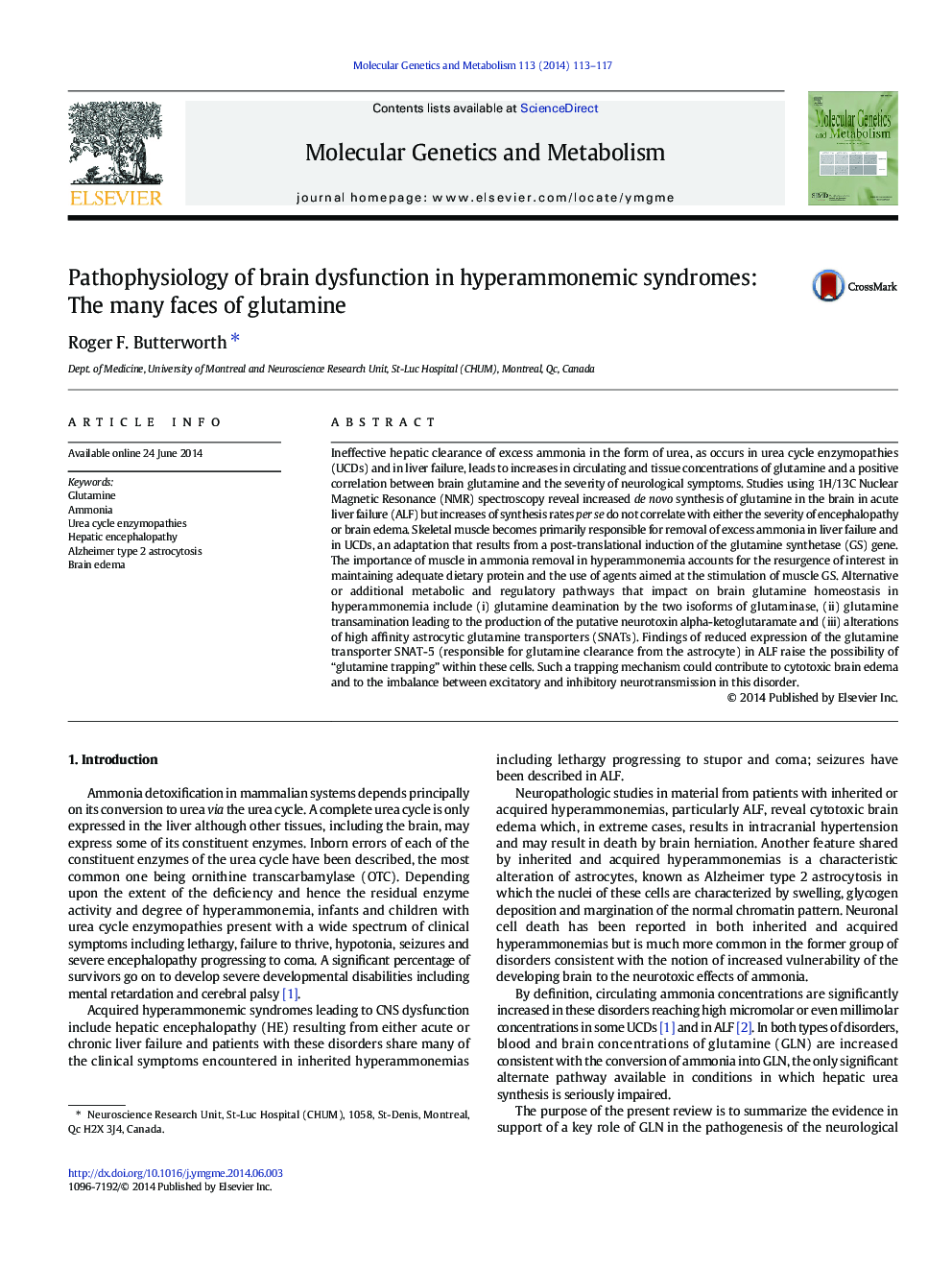| Article ID | Journal | Published Year | Pages | File Type |
|---|---|---|---|---|
| 8343881 | Molecular Genetics and Metabolism | 2014 | 5 Pages |
Abstract
Ineffective hepatic clearance of excess ammonia in the form of urea, as occurs in urea cycle enzymopathies (UCDs) and in liver failure, leads to increases in circulating and tissue concentrations of glutamine and a positive correlation between brain glutamine and the severity of neurological symptoms. Studies using 1H/13C Nuclear Magnetic Resonance (NMR) spectroscopy reveal increased de novo synthesis of glutamine in the brain in acute liver failure (ALF) but increases of synthesis rates per se do not correlate with either the severity of encephalopathy or brain edema. Skeletal muscle becomes primarily responsible for removal of excess ammonia in liver failure and in UCDs, an adaptation that results from a post-translational induction of the glutamine synthetase (GS) gene. The importance of muscle in ammonia removal in hyperammonemia accounts for the resurgence of interest in maintaining adequate dietary protein and the use of agents aimed at the stimulation of muscle GS. Alternative or additional metabolic and regulatory pathways that impact on brain glutamine homeostasis in hyperammonemia include (i) glutamine deamination by the two isoforms of glutaminase, (ii) glutamine transamination leading to the production of the putative neurotoxin alpha-ketoglutaramate and (iii) alterations of high affinity astrocytic glutamine transporters (SNATs). Findings of reduced expression of the glutamine transporter SNAT-5 (responsible for glutamine clearance from the astrocyte) in ALF raise the possibility of “glutamine trapping” within these cells. Such a trapping mechanism could contribute to cytotoxic brain edema and to the imbalance between excitatory and inhibitory neurotransmission in this disorder.
Related Topics
Life Sciences
Biochemistry, Genetics and Molecular Biology
Biochemistry
Authors
Roger F. Butterworth,
